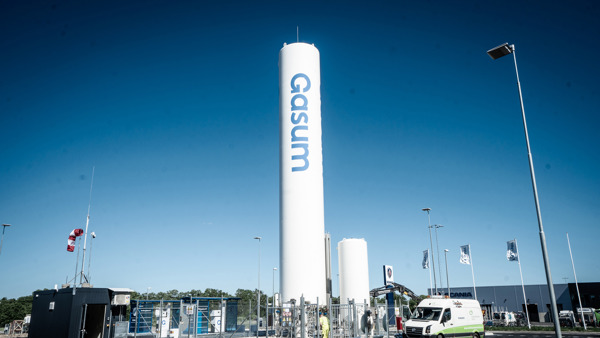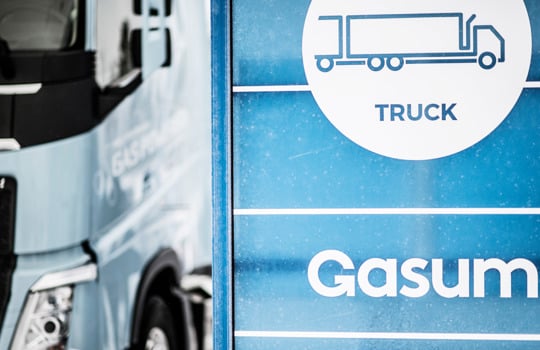Reduce transport costs and emissions with gas
Cost-effectiveness and environmental friendliness are among the advantages of gas when discussing fuel alternatives for heavy traffic. From Gasum, you can get both liquefied gas (LBG or LNG) and compressed gas (CBG or CNG) according to your needs.
Gas as a fuel offers many possibilities for transport companies and logistic buyers:
- Gas is a way to simultaneously reduce both fuel costs and emissions
- It enables the reduction of transport emissions effectively already today - with renewable biogas, greenhouse gas emissions during the fuel lifecycle can be reduced by up to 90 percent
- It can enhance the competitiveness of the company when customers increasingly demand responsible, eco-friendly transportation
What kind of gas is filled in a truck, delivery vehicle or bus?
Liquefied biogas (LBG) and liquefied natural gas (LNG) are best suited for trunk road traffic. Depending on the vehicle model, a single fill of liquefied gas can take a vehicle up to 1,600 kilometers.
The following manufacturers offer vehicles powered by liquefied gas:
- Iveco
- Scania
- Volvo
For local deliveries, waste transport and bus transport, however, compressed biogas (CBG) and natural gas (CNG) are suitable. Depending on the type of vehicle, one fill-up can cover a distance of up to 600 kilometers.
The following manufacturers offer vehicles powered by compressed gas:
- Iveco
- Renault
- Scania
- Volvo
Filling gas is almost as fast as filling diesel. When driving, almost all gas-powered vehicles are very quiet and some have even been granted the Piek Quiet Truck certificate (noise level below 72 dB).
Biogas is a 100% renewable energy source
Gasum owns biogas plants in Finland and Sweden and buys biogas from partner plants ensuring the availability of biogas in the Nordic countries. Biogas production uses different biodegradable waste from households, agriculture and industries as feedstock.

What does LNG mean? What about LBG?
Gas-related abbreviations can be a bit confusing. Here’s our quick guide to Gasum gas products for transport.
- LNG = liquefied natural gas
- LBG = liquefied biogas
- CNG = compressed natural gas
- CBG = compressed biogas
Filling station network at your service in Finland, Norway and Sweden
In addition to fuel savings and environmental friendliness, ease and carefreeness of use is of great importance when considering switching to gas. The Nordic countries already have an extensive gas filling station network built by Gasum in addition to stations operated by others. The network is constantly being expanded to meet the needs of heavy traffic. Most of our filling stations offer both renewable biogas and natural gas. Our modern stations are also designed with long vehicles in mind.
Our online portal helps our customers manage their fleet and our mobile application helps drivers in their daily operations. Our customer service is available for you 24/7.
Contact our experts and let us find a fuel solution that suits your company's needs!






